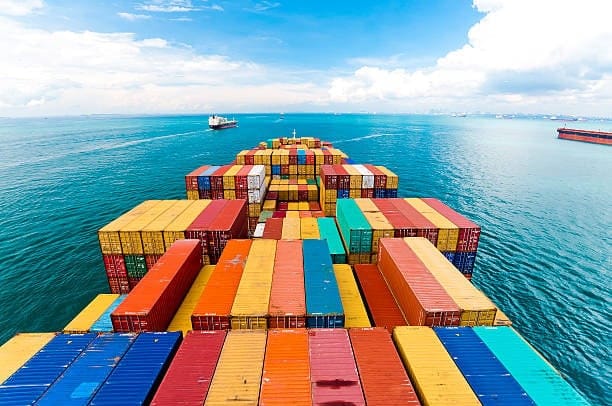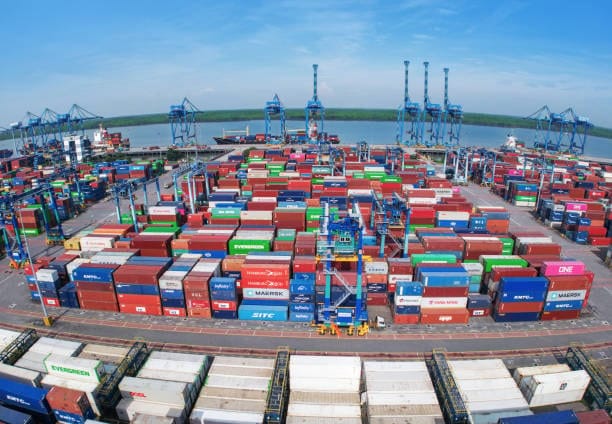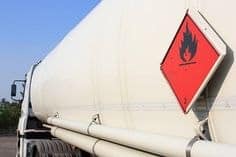Shipping between Malaysia and United Kingdom is not an easy task due to the web of logistics, costs, and regulations. Small parcel or large freight, you owe it to yourself to understand the process so you can be sure goods arrive safely, on time and in budget. It is a guide that discusses shipping options, timelines, costs, customs requirements and practical tips for an easy experience until April 1, 2025.
Overview of Shipping Options

From Malaysia to UK, two main ways of shipping are air freight and sea freight, often facilitated by a freight forwarder . Depending on urgency, volume and nature of goods, each provides different advantages.
Time critical shipments request the fastest option, which is air freight. From Malaysia, cargo normally takes 3 to 5 days to reach a UK destination port. For a business traveler, major airlines and courier services like DHL, FedEx, and UPS even have a number of frequent flights from Kuala Lumpur International Airport (KUL) to their hubs such as London Heathrow (LHR). On the other hand, this method is highly appropriate for the small and costly valuable objects such as documents and electronics, while also considering prohibited items and comparatively higher cost.

Compared to another alternative of freight shipping, which is sea transport, it is always the best option regarding a more economical freight shipping option and for shipping big items. It is divided in to full container load (FCL for Full Container Load) and less than container load (LCL for Less than Container Load), which is the term used to refer the partial load of a container, both of which may incur customs duties. LCL or less than container load, is a service that allows other shippers to share space in a container whereas FCL or full container load requires leasing an entire 20- or 40-foot container. Transit times range between 30 and 40 days, with a total of about 59 days if the ports such as Port Klang to Felixstowe or Southampton are included in the equation. Then, this option is widely used for household goods, furniture, or bulk commercial cargo.
International courier services provide a hybrid solution for smaller parcels combining speed and convenience. The tracked services offered by international shipping services like TNT and Seven Seas Worldwide include a variety of delivery times of a few days to weeks depending on the chosen plan.
Factors Influencing Shipping Costs

Shipping costs from Malaysia to UK varies as dependent on several factors. Primarily driving weight and dimensions. Air freight frequently is paid by volumetric weight (length x width x height divided by a factor) while sea freight’s primary focuses on container size or cargo weight. Take as an example a 1 cubic meter shipment which, while taking its time in trip via sea may charge less than the air alternative, reflecting different shipping rates even tripled in transit time.

It also all depends what mode of transport will be used. Despite being swift, air freight for equivalent weight is between two and three times more expensive than sea freight. Rates are also influenced by season because the peak seasons—mid August through mid October—have higher demand and prices associated with holiday shipping surges. Optional but recommended, an add-on that insurance which is typically 1–2% of the shipment’s declared value and offers protection for loss or damage, and to ensure compliance, one must pay customs duties .
Port selection influences expenses too. Costs for shipping from Malaysia’s Port Klang, the country’s busiest port, to Felixstowe, one of the UK’s big hubs, may be greater than from Penang or Southampton, especially when considering duties . In addition to these additional fees (customs clearance, handling and inland transportation), the price is much higher for door to door service.
Transit Times and Logistics

Transit times are considerably different by method and route. Sea freight’s port to port delivery takes 30–40 days compared to 3-5 days for air freight. LCL shipments tend to take longer because of the extra unloading and packing, but FCL shipments tend to move faster hitting days off the delivery. For instance, an LCL may take for 40 to 45 days between Port Klang and Felixstowe since the LCL must be consolidated and deconsolidated before it reaches its final destination.

Peak seasons or any customs holdups can bring about delays. Timelines may extend beyond usual to weather conditions, port congestion (e.g. Singapore or Rotterdam), and global supply chain disruptions, witnessed in recent years, among others. Express options are available with DHL courier, for example delivery in 2-3 days depending on the size of your parcel but the costs are reflective of its urgency.
Most carriers provide tracking systems that give you peace of mind with real live tracking capability. Bi-directional publish might not work for sea freight shipments as often as air or courier based options, but major events like departure, transshipment, and arrival are usually recorded.
Customs Regulations and Documentation
The shipping from Malaysia to the U.K specifically requires the customs clearance. For that, the UK HM Revenue & Customs (HMRC) requests a commercial invoice with the goods value and description, packing list and bill of lading or airway bill. An importation permit may be needed for certain items such as hazardous materials or perishables, in addition to paying customs duty .

In addition, Royal Malaysian Customs Department oversees Malaysia’s export regulations. Items such as weapons, narcotics, goods even offensive to the Muslim culture (e.g., some publications) are prohibited. Similar categories are banned in the UK and products such as ivory or unprocessed animal products are limited. Since both countries are guided by Universal Postal Union (UPU) Guidelines, it is advisable to check the country specific lists by the UPU.
Most imports into the UK are subject to duty and VAT. VAT is charged on goods over £135 (20% from 2025), depending on product tariff code; electronics may be 0-2%, whilst textiles could be 12%. The tax exemption on personal effects shipped under an expatriate form (Transfer of Residence Relief (ToR01)) may apply if personal effects are over six months prior and accompanying an expatriate.

Non negotiable are proper labeling and packaging. The packages must have clearly the sender details, the recipient’s address and the Declaration of Customs. Marking should be done for fragile or hazardous goods in order to satisfy International Air Transport Association (IATA) or International Maritime Dangerous Goods (IMDG) standards.
Choosing the Right Shipping Method
Determining which shipping method to use is based on what speed it takes, what cost it is, and what the type of the cargo is. For instance, big businesses that need to move bulk goods like rubber products or palm oil derivatives would prefer to use FCL sea freight because it reduces per unit cost. For smaller volumes, it is likely that some people who send personal items, whether students returning to UK for example, will prefer LCL or courier services which may offer the cheapest shipping options.

Urgency dictates choice too. However, if the shipment is of air freight worth, there is something that cannot be shipped in ones time which is rush shipment for example medical supplies. Like its affordability, the delay can suffer from relocating sea freight via sea freight, although relocating households with furniture and appliances is possible.

Environmental impact is another consideration. Sea cargo pales in carbon emissions compared to air and is in line with sustainability goals. Seven Seas Worldwide services stress the usage of eco friendly sea container shipping which takes 85-108 days but less carbon footprint than air parcel.
Practical Tips for Successful Shipping

It is important to avoid pitfalls by preparing. Accurate measuring and weighing of items means no ‘surprises’ at booking, volumetric weight can create strong variations to air freight costing. Good are packaged with sturdy packaging such as double walled boxes or bubble wrap in order to protect them whilst being transported, but particularly long sea routes that involve rough handling.
Documentation must be meticulous. Clearance can be delayed if the work is not accurately billed or if permits are missing and, while waiting, the work is stored up at UK ports, where storage fees are incurred. Carriers such as SeaRates or EasyParcel provide handy online tools for cost estimation, paperwork and instant quotes as well as checklists.

Insurance is an option that while optional is a good safeguard. Small premium ensures compensation and if it is a lost or damaged shipment the sender is liable. Additionally, tracking shipments regularly also allows the delays to be addressed proactively, simply by contacting the carrier at the first sign of a customs hold.
They save on money and on spending time due to shipping out of peak seasons. FCL requires the booking in advance, which secures container space when it’s in demand. For small parcels, multiple items going to the same place can reduce cost by sending to couriers rather than multiple separate sends.
Challenges and Solutions

Shipping from Malaysia to the UK isn’t ideal. Delayed due to missing paperwork, customs delays are common. This is mitigated by systems checking them against UK and Malaysian requirements start shipping. If you choose to avoid port congestion, in particular at transshipment hubs such as Singapore, then direct routes or less busy ports like Penang may help.

Costs are affected by currency fluctuations since rates are usually specified in USD or MYR. A form of large shipment expense stabilization is to lock in prices with carriers or use forward contracts. Refrigerated (reefer) containers maintain perishables’ quality but availability for this form of transport requires early booking booking process.

Lost parcels, though rare, occur. EasyParcel and other courier services does offer support for the claim and sea freight insurers will cover the FCL or LCL losses, if insured. The majority of the issues can be resolved by simply communicating to the carriers—reputable providers focus more on customer service to keep customers informed shipment’s weight .
Industry Insights and Trends

Operating on a manufacturing and trade basis, Malaysia’s export economy as of April 2025 is supported by it’s key partners with the UK, electronics, rubber and palm oil. But VAT and duty are sticking points when it comes to some imports under the UK’s post-Brexit trade framework. Freightos and SeaRates are real time freight rate offerings that are transparent digital platforms customs documents.

Carriers test low emission vessels and biofuels as the industry is fundamentally driven by sustainability. While faster, air freight has its carbon baggage, driving shippers to adopt hybrid solutions and compare : air for urgencies, sea for bulk ocean freight. The growth in e-commerce is also met by demand for courier services as Malaysians ship to UK consumers through platforms such as Amazon or eBay express service.
Conclusion
To choose shipping from Malaysia to the UK there is a range of methods available including quick air or a more economical sea. It’s about knowing costs, deadlines, customics – and then tailoring the approach to the needs of the shipment. As this 6,500 mile journey can go by one full box or a full container load, proper planning guarantees the goods get through efficiently port door. However, with the right preparation and method, Malaysia’s vibrant trade hub can easily be connected to UK’s buzzing markets seamlessly.




